TSX gains after CPI shows US inflation rose 3%
VF Corporation (NYSE:VFC) shares surged nearly 15% in premarket trading after the company’s Q1 2026 earnings presentation revealed better-than-expected financial results. The apparel and footwear conglomerate reported an adjusted operating loss significantly lower than guidance, showing progress in its ongoing transformation efforts despite continued challenges at its Vans brand.
Quarterly Performance Highlights
VF Corporation reported Q1 2026 revenue of $1.8 billion, flat compared to the previous year or down 2% on a constant currency basis, but exceeding the company’s guidance of a 3-5% decline. Excluding the struggling Vans brand, total revenue increased by 6% year-over-year, or 5% in constant currency.
The company’s adjusted operating loss of $56 million significantly outperformed guidance of $110-125 million. Adjusted operating margin improved by 270 basis points year-over-year to -3.2%, while adjusted gross margin expanded by 290 basis points compared to Q1 2025.
As shown in the following comparison of actual results versus guidance, VF Corporation exceeded expectations across key metrics:
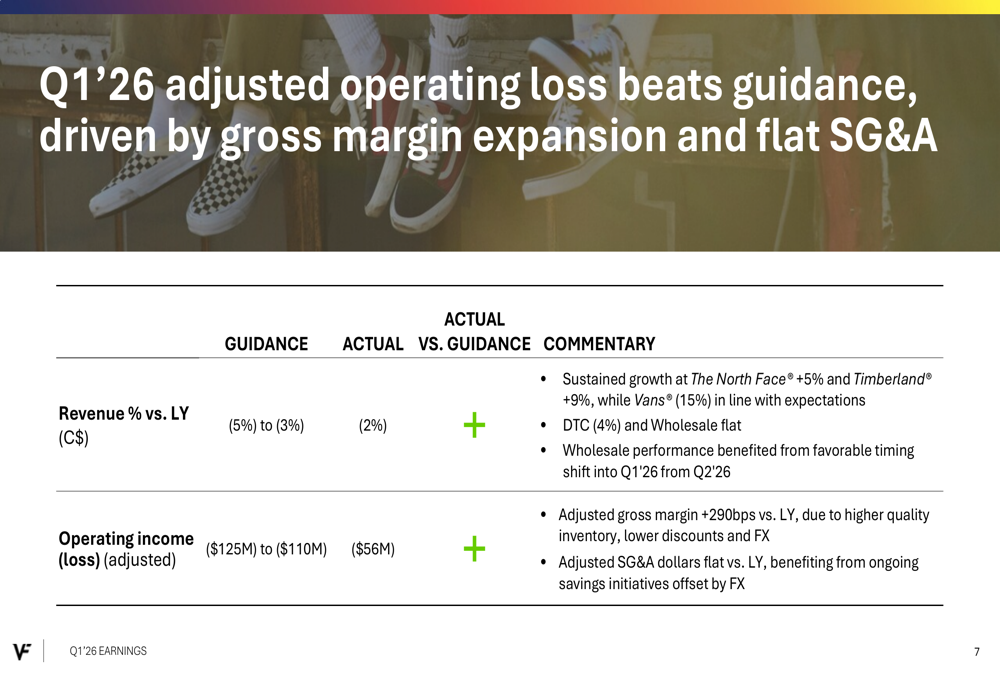
President and CEO Bracken Darrell expressed confidence in the company’s transformation strategy, stating: "Q1’26 performed ahead of expectations. Top-line trend improved to flat (-2% C$). North Face and Timberland sustained positive momentum while Altra grew strongly. Vans impacted by channel rationalization. VF on track with transformation: lowering costs, improving margins, reducing debt, transforming the organization."
The company’s sequential revenue trend shows stabilization after several quarters of decline:
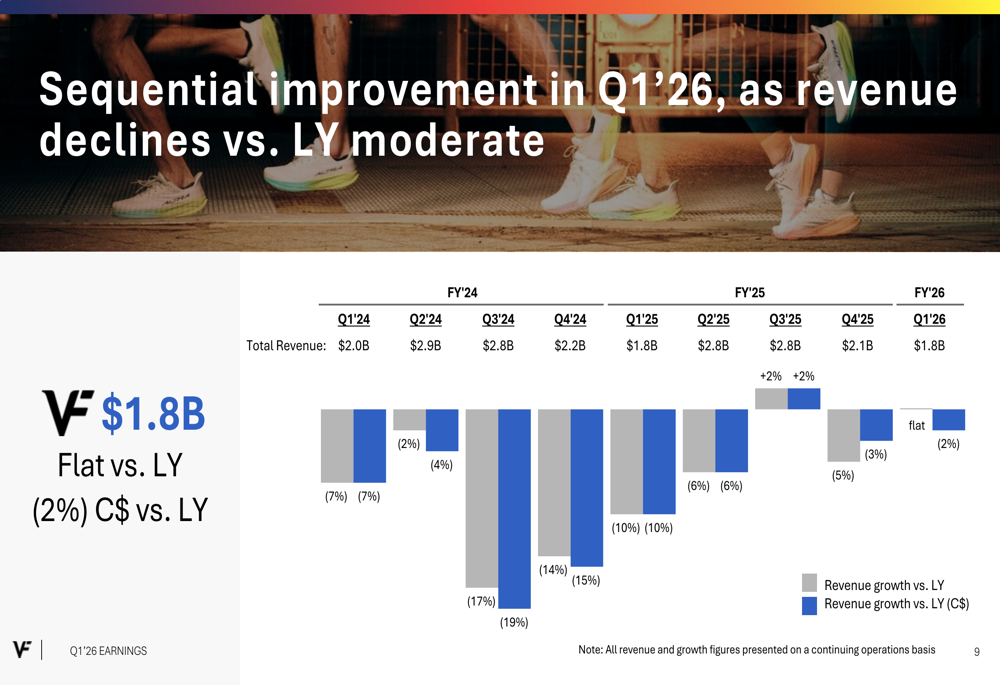
Brand Performance Analysis
Performance varied significantly across VF Corporation’s brand portfolio. The North Face delivered 6% growth (5% constant currency), while Timberland posted an impressive 11% increase (9% constant currency). However, Vans continued to struggle with a 14% decline (15% constant currency), though this was in line with expectations as the company implements channel rationalization.
The following breakdown illustrates the divergent performance across brands, regions, and channels:
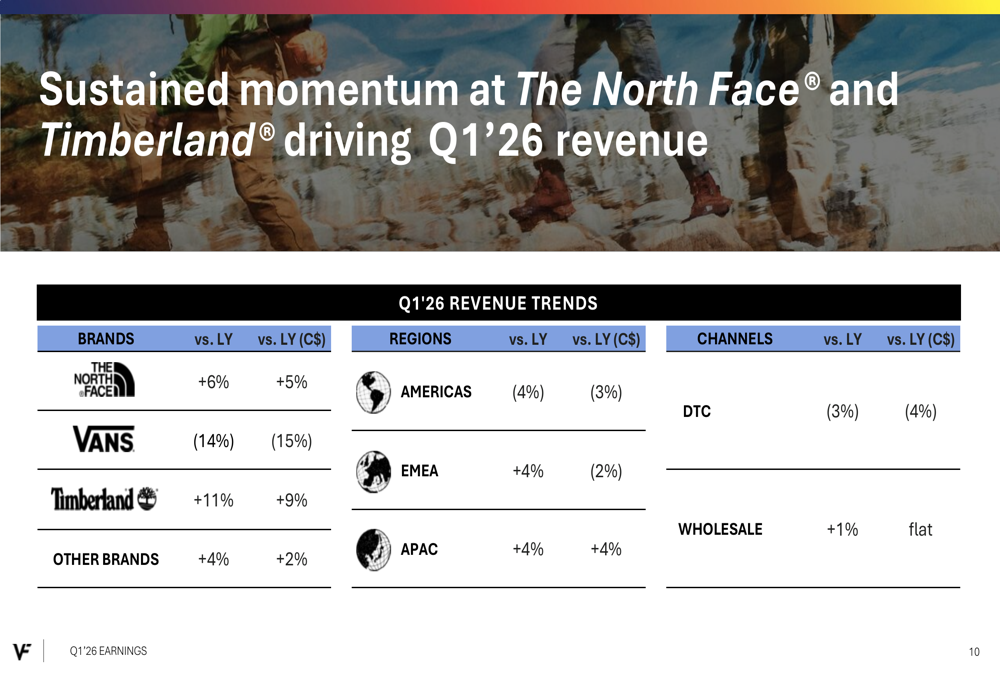
The North Face saw 7% growth in direct-to-consumer (DTC) channels, supported by new store openings and improved profitability driven by lower promotions. Product drivers included technical trail running footwear, new lifestyle apparel, and bags and packs.

Vans continued to face challenges, with revenue down by high single digits year-over-year when excluding the impact of channel rationalization actions. The brand is focusing on new product innovations like Super Lowpro and Curren Caples Skate, while also driving consumer engagement through partnerships with Lil Uzi and the return of the Vans Warped Tour.

Timberland demonstrated strong global growth in both DTC and wholesale channels with lower discounting, contributing to higher margins. The Americas region was particularly strong with 15% growth and double-digit comparable sales in DTC. The brand maintained momentum in its iconic 6" boot and saw strong growth in boat shoes in EMEA and APAC regions.
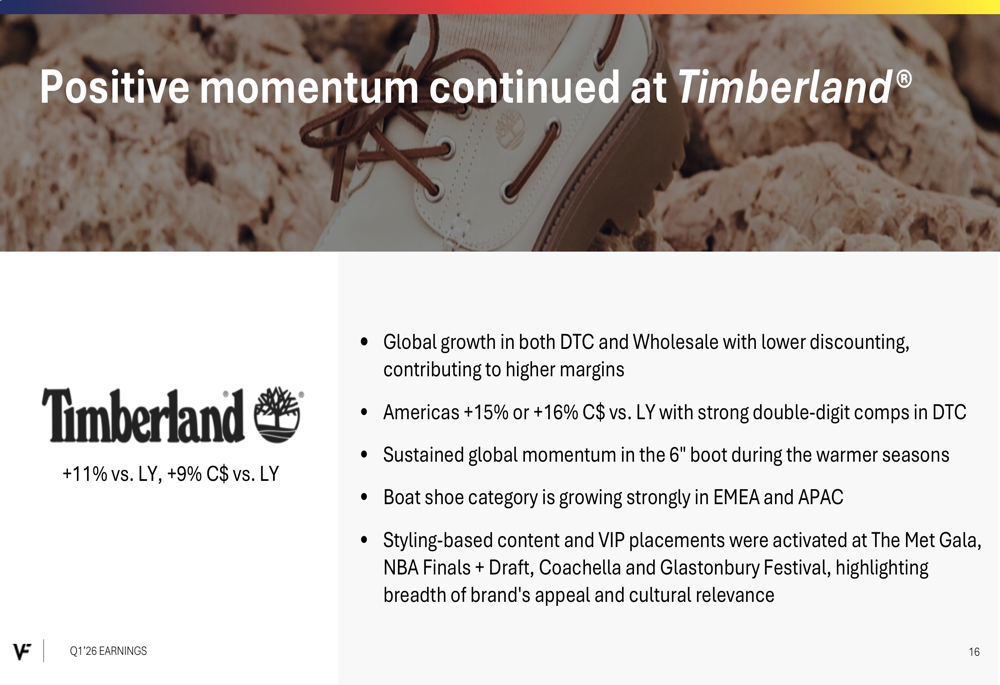
Among smaller brands, Altra stood out with over 20% growth driven by key franchise style launches, while Dickies showed moderating declines. The company’s packs business grew year-over-year with strong margin expansion.
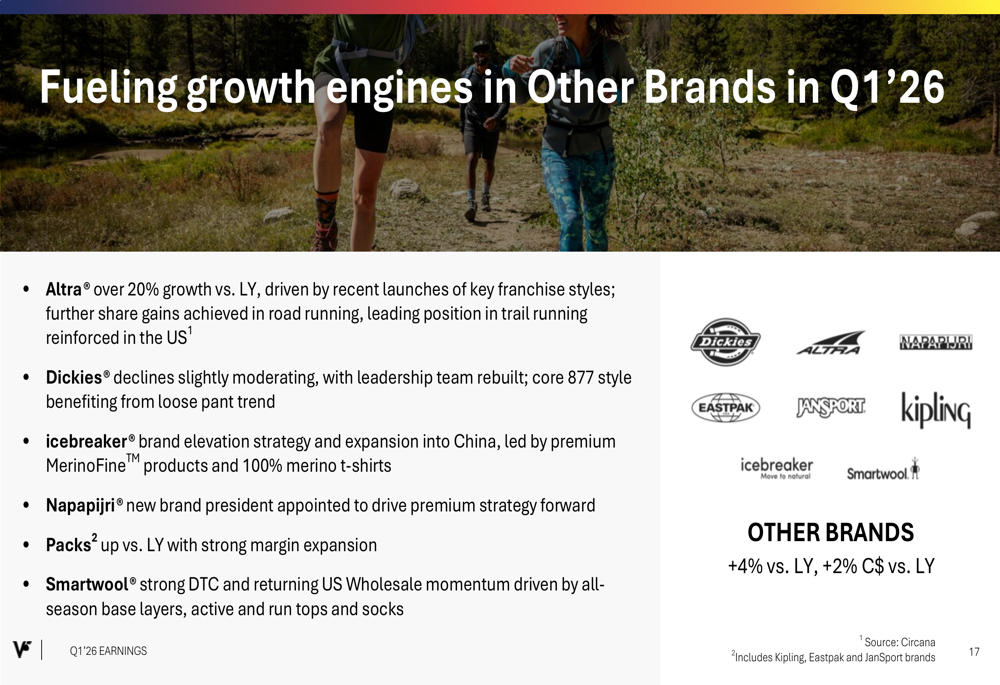
Debt Reduction and Financial Position
VF Corporation made significant progress in strengthening its balance sheet, reducing net debt by $1.4 billion or 20% compared to the previous year. Excluding lease liabilities, net debt decreased by 27% year-over-year. The company paid $35 million in cash dividends during the quarter.
The following chart illustrates the substantial debt reduction achieved:

This improvement in financial position comes after the company sold its Supreme brand on October 1, 2024, allowing for greater focus on its core brands and debt reduction efforts.
Forward-Looking Guidance
For Q2 2026, VF Corporation expects revenue to decline 2-4% on a constant currency basis compared to the previous year, including a negative 1% impact from a wholesale timing shift into Q1. Adjusted operating income is projected to be between $260-290 million, with adjusted gross margin expected to remain broadly flat year-over-year.
For the full fiscal year 2026, the company anticipates improvements in free cash flow, adjusted operating income, and operating cash flow compared to FY 2025.
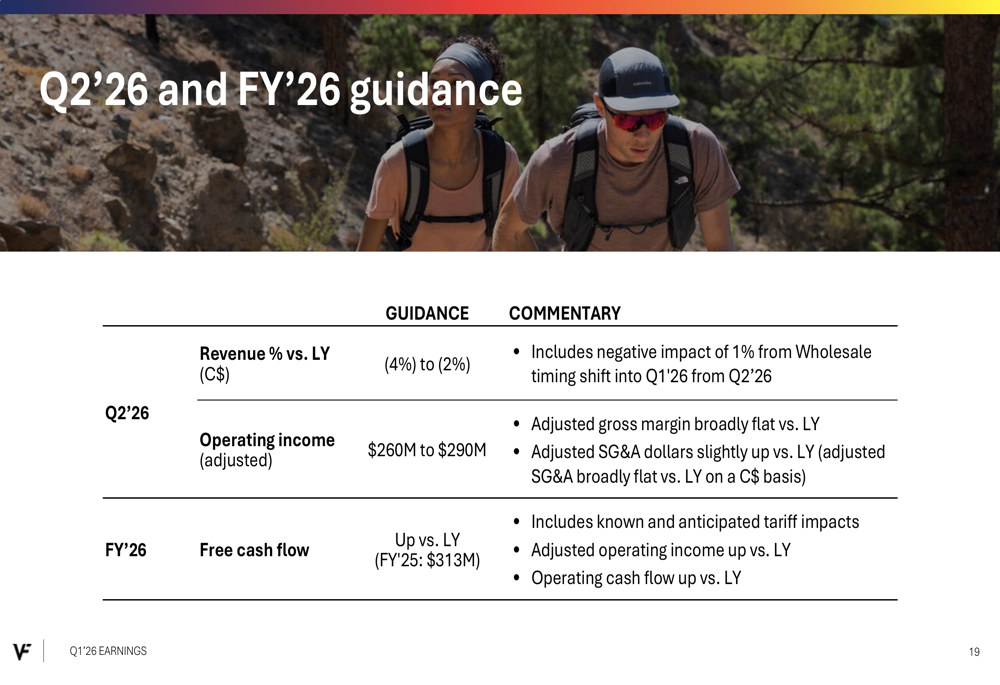
The company also announced a realignment of its reporting segments effective Q1 2026, moving from three segments (Outdoor, Active, Work) to a simplified structure with Outdoor, Active, and an "All Other" category that includes brands like Dickies, Altra, Smartwool, Napapijri, and Icebreaker.
VF Corporation’s better-than-expected Q1 results and positive outlook for FY 2026 suggest that the company’s transformation strategy is gaining traction, despite ongoing challenges with the Vans brand. With continued momentum in The North Face and Timberland, along with significant debt reduction, investors appear increasingly confident in the company’s turnaround efforts, as evidenced by the strong premarket stock performance.
Full presentation:
This article was generated with the support of AI and reviewed by an editor. For more information see our T&C.
